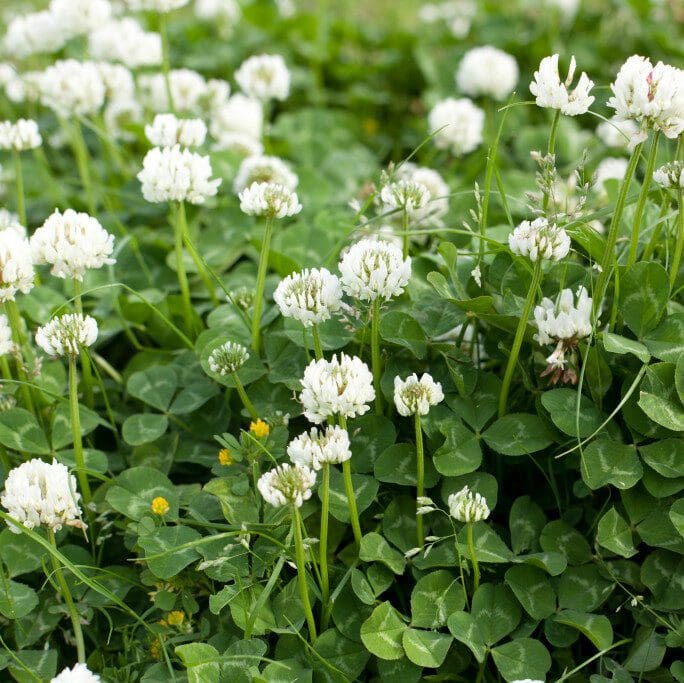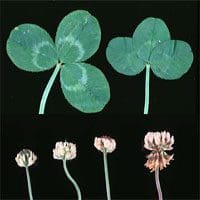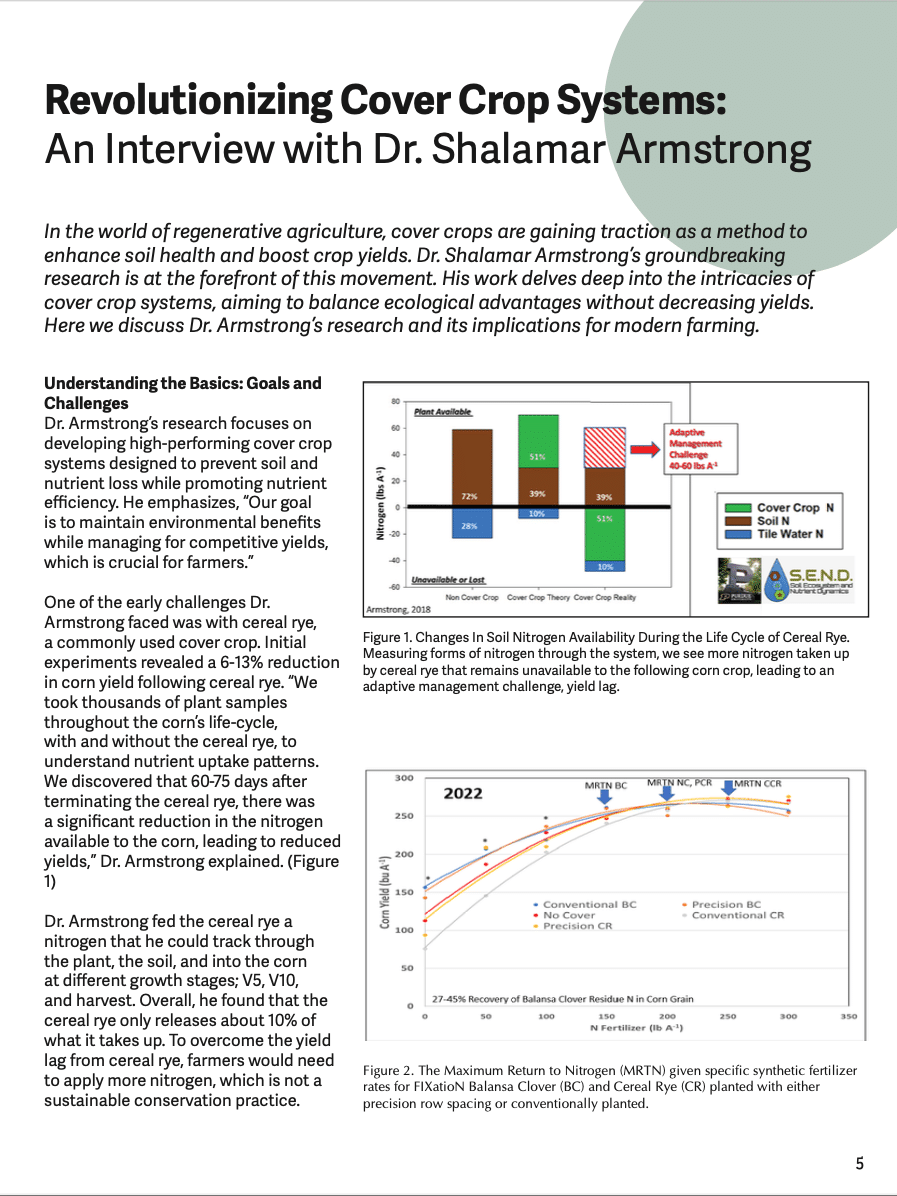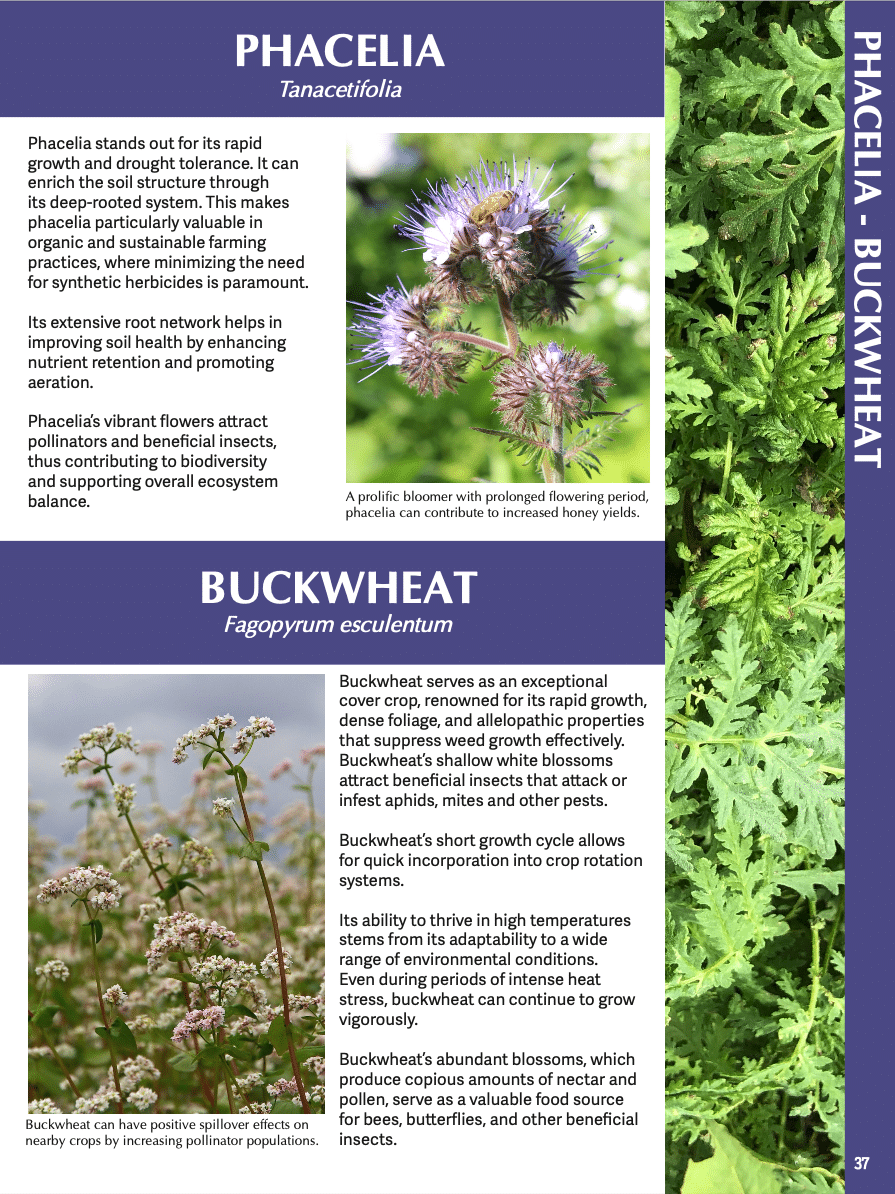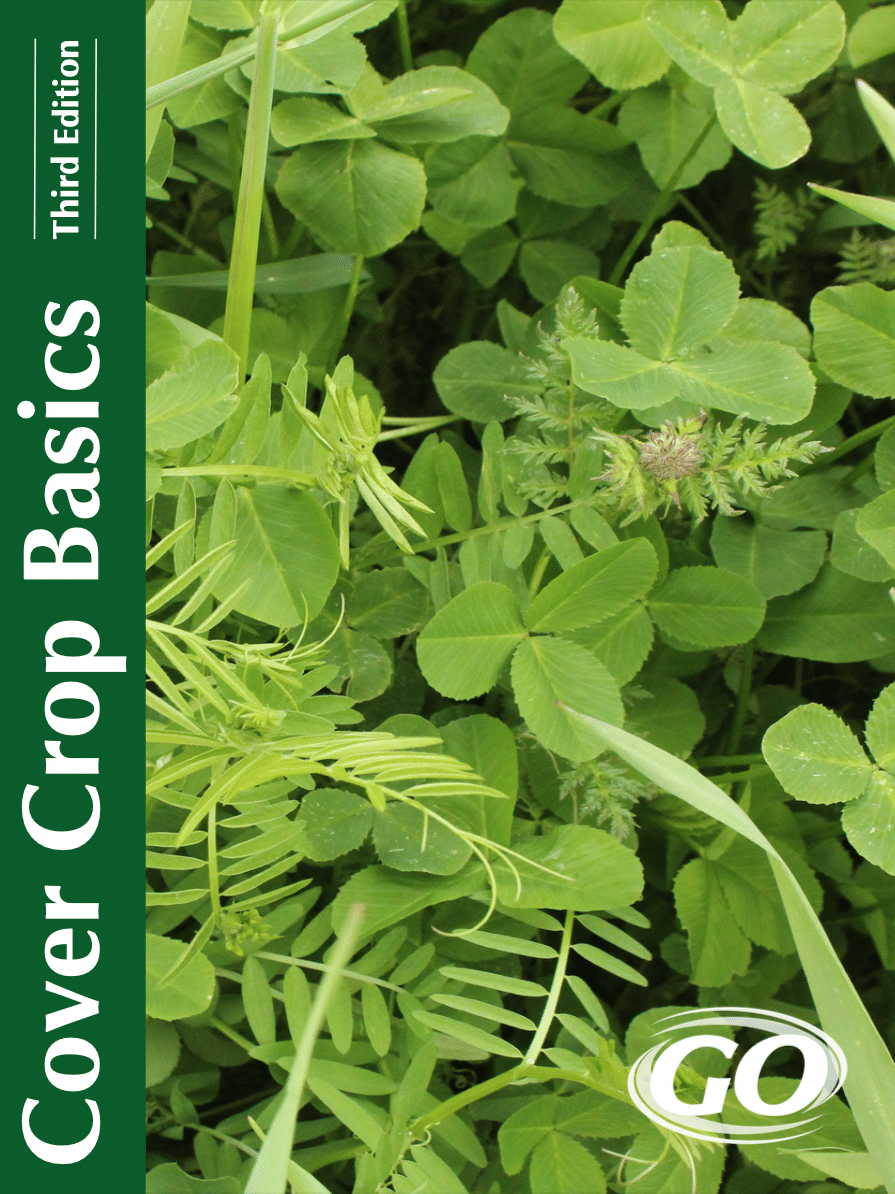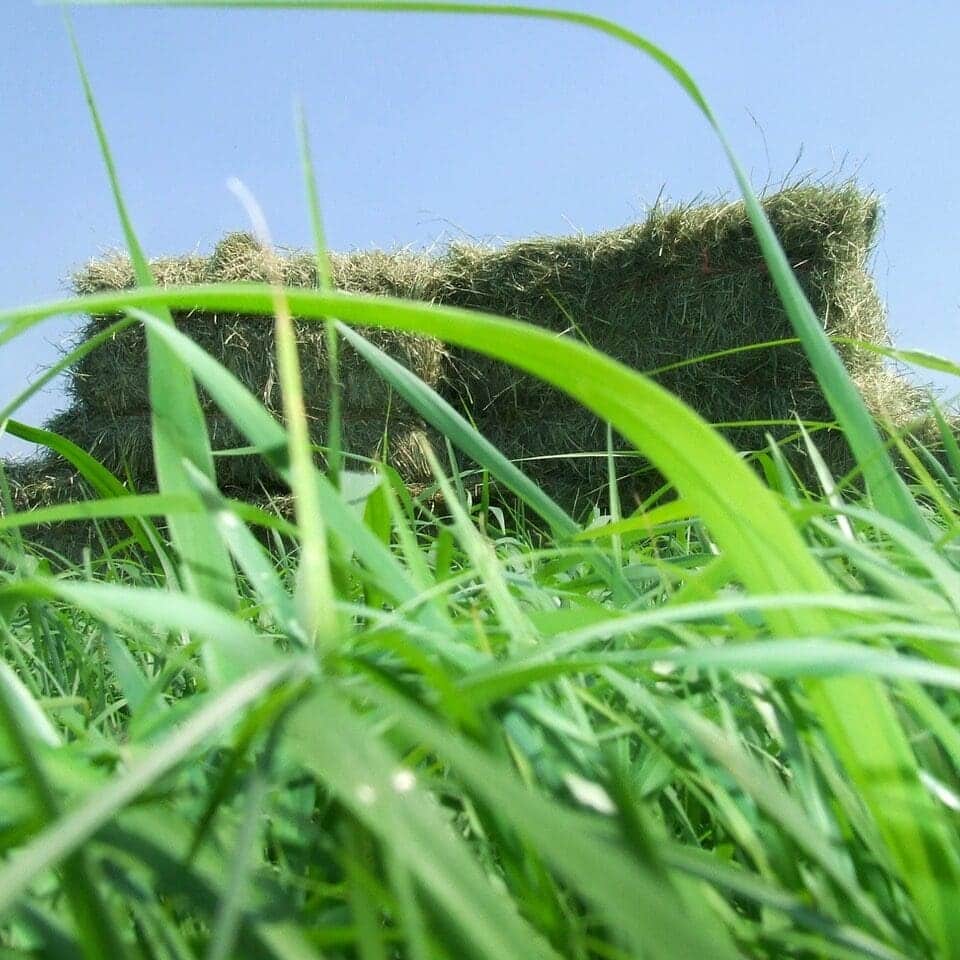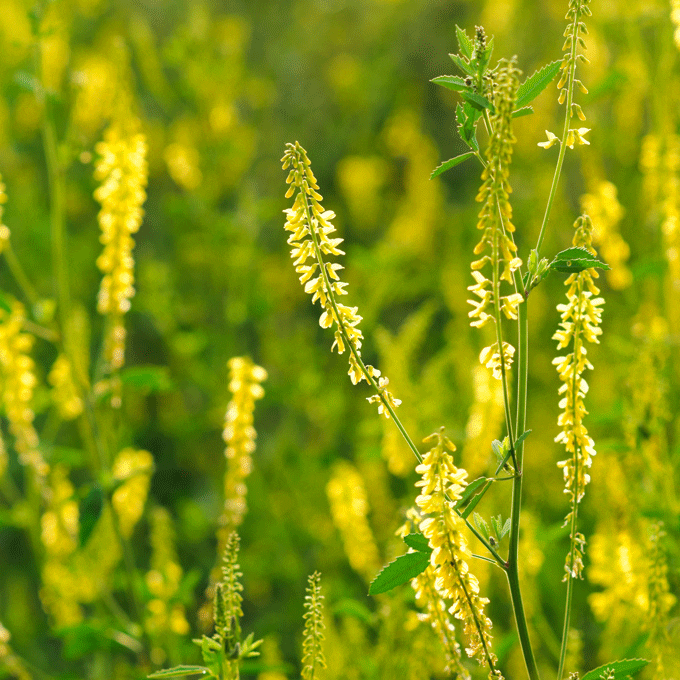Ladino Clover
- Scientific name: Trifolium repens
- Responsive to cool, moist conditions
- It grows best between 50 and 85 degrees F
- Not adapted to shallow, droughty soils.
- High in protein digestibility
- Heavy nitrogen fixer
- Easy to establish and moderately winter hardy.
Ladino clover (Trifolium repens) is especially responsive to cool, moist conditions. It grows best between 50 and 85 degrees F. It also responds to irrigation about as much as any other legume. Because of its shallow root system, it is not adapted to shallow, droughty soils.
Ladino clover (Trifolium repens) is widely used for forage, especially in pasture. It is unexcelled as a pasture for hogs because of its unusually low fiber content. It is high in protein digestibility, a heavy nitrogen fixer, easy to establish and moderately winter hardy.
In grazing trials with beef cattle at the University of Missouri-Columbia, grass-ladino pastures have had as great a carrying capacity as grasses fertilized with 80 pounds of nitrogen and have produced as much beef as grasses with 100 pounds of nitrogen.
The two greatest deterrents to greater use of ladino clover are the possibility of its causing bloat and its inability to survive prolonged periods of dry weather.
The bloat problem is extremely difficult to characterize. Some farmers have reported using ladino for many years with little or no bloat problem. Others have reported heavy livestock losses. Because of the infrequency of the problem, there are often reports that a non-bloating variety of white or ladino clover exists. Unfortunately, this is not true.
One of the keys to grazing ladino with reasonable safety is to maintain a uniform grass-clover stand, with the clover not contributing more than 40 percent of the stand. Uneven stands of grass and ladino seem to be particularly dangerous. As a general rule, do not turn hungry cattle onto white clover pastures, especially those pastures wet with dew.
Ladino clover is less sensitive to winter damage by fall usage than is red clover or alfalfa.
Ladino clover can be useful in re-establishment of legumes in predominantly grass sods. On an experimental basis, good stands of clover were established in a heavy fescue sod by overseeding one pound of ladino seed per acre for two consecutive years. No tillage was used, but seed was sown during winter months (January-February) so that freezing and thawing worked the seed into the soil. No nitrogen fertilizer was used during the establishment period.
Grazing management as well as weather factors will influence the amount of ladino in a pasture. Increased intensity of grazing usually increases the proportion of ladino to grass, while less frequent or longer intervals between defoliation tend to increase the proportion of grass in the mixture.
When ladino is seeded in a mixture with other legumes, about 1/4 pound of ladino seed per acre is adequate. When it is the only legume seeded with a grass, about 1/2 to 1 pound is adequate. When used to overseed grass previously established, 1 to 2 pounds is the most used rate. All seeding rates are for pure line seed (PLS).
***Click on the “Quick Plant Facts” tab above for more information.
Ladino Clover NRCS Illinois Grazing Manual Fact Sheet
Ladino Clover NRCS Illinois Grazing Manual Fact Sheet
PDF version of NRCS Grazing Fact Sheet
Prepared By: USDA, University of Illinois Extension, Illinois Department of Agriculture, Illinois Grassland Conservation Initiative
White Clover NRCS Plant Guide
White Clover NRCS Plant Guide
PDF version of NRCS Plant Guide & Fact Sheet
Prepared By: Loren St. John, USDA NRCS Plant Materials Center, Aberdeen, ID
Dan Ogle, USDA NRCS Idaho State Office, Boise, ID
Species Coordinator: Loren St. John, USDA NRCS Plant Materials Center, Aberdeen, ID
Cover Crop Basics
An informative, authoritative guide to cover crops. Very comprehensive, and covers all geographic regions of the USA. Published by GO Seed.
Who is Great Basin Seed?
Great Basin Seed is a seed company that specializes in seed sales and consultation for home, ranch, farm, range and reclamation. We have been a leader in the seed industry since 1974.
Our History
We've been in the seed business since 1974.
What We Offer
We offer seed for home, farm, ranch, range and reclamation projects.
Meet the Gang
We have the best employees in the world! We are proud of the work they do, and trust them to serve you!
Right: Company founder Lloyd and his wife Paula Stevens in a wildflower seed production field circa 1977
Helpful Links
Additional information about this product can be found on the academic websites linked below.
Synonyms
Many plants have more than one common and scientific name. We've listed a few of them below.
- Ladino Clover
- Trifolium repens
- Clover
- Dutch Clover
- Purple Dutch Clover
- Shamrock
- White Clover
Quick Plant Facts
| Zone Map | comingsoon.gif |
|---|---|
| Sowing Rate | 2-6 PLS lbs. per Acre |
| Plant PDF File | trrel.pdf |
| Seed Count | 800000 |
